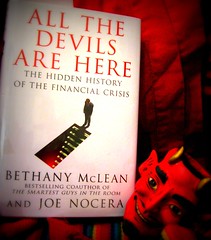Question by PRAVEEN V: what are the characteristics of securities ?
Ideal answer:
Answer by dew drop
Securities may be classified according to the following categories:
Issuer
Currency of denomination
Ownership rights
Term to maturity
Degree of liquidity
Income payments
Tax treatment
Charecteristics By Kind of Issuer
Issuers of securities contain industrial companies, government agencies, local authorities and international and supranational organizations (such as the Globe Bank). Debt securities issued by a government (known as government bonds or sovereign bonds) generally carry a lower interest rate than corporate debt issued by industrial businesses. Interests in an asset — for instance, the flow of royalty payments from intellectual property—may also be turned into securities. These repackaged securities resulting from a securitization are usually issued by a business established for the objective of the repackaging—called a particular objective automobile (SPV). See “Repackaging” below. SPVs are also utilised to issue other kinds of securities. SPVs can also be utilized to assure securities, such as covered bonds.
New capital: Industrial enterprises have traditionally used securities as a means of raising new capital. Securities could be an desirable alternative relative to bank loans based on their pricing and industry demand for specific characteristics. Another disadvantage of bank loans as a source of financing is that the bank may possibly seek a measure of protection against default by the borrower through substantial monetary covenants. Through securities, capital is offered by investors who purchase the securities upon their initial issuance. In a similar way, governments could raise capital through the issuance of securities (see government debt).
Repackaging: In recent decades securities have been issued to repackage existing assets. In a classic securitisation, a economic institution could want to get rid of assets from its balance sheet in order to accomplish regulatory capital efficiencies or to accelerate its receipt of cash flow from the original assets. Alternatively, an intermediary could wish to make a profit by acquiring economic assets and repackaging them in a way which tends to make them much more attractive to investors.
By Kind of Holder
Investors in securities might be retail, i.e. members of the public investing other than by way of business. The greatest part in terms of volume of investment is wholesale, i.e. by economic institutions acting on their own account, or on behalf of clients. Critical institutional investors consist of investment banks, insurance coverage businesses, pension funds and other managed funds.
Investment: The conventional financial function of the obtain of securities is investment, with the view to receiving earnings and/or achieving capital acquire. Debt securities generally provide a higher price of interest than bank deposits, and equities may offer the prospect of capital development. Equity investment might also offer you manage of the organization of the issuer. Debt holdings could also provide some measure of manage to the investor if the company is a fledgling begin-up or an old giant undergoing ‘restructuring’. In these circumstances, if interest payments are missed, the creditors might take manage of the company and liquidate it to recover some of their investment.
Collateral: The final decade has seen an massive growth in the use of securities as collateral. Acquiring securities with borrowed cash secured by other securities is known as “buying on margin.” Where A is owed a debt or other obligation by B, A could call for B to provide house rights in securities to A. These home rights enable A to satisfy its claims in the event that B becomes insolvent. Collateral arrangements are divided into two broad categories, namely safety interests and outright collateral transfers. Typically, commercial banks, investment banks and government agencies are significant collateral takers.
Debt and Equity
Securities are traditionally divided into debt securities and equities.
Debt
Debt securities might be known as debentures, bonds, notes or commercial paper depending on their maturity and specific other traits. The holder of a debt security is generally entitled to the payment of principal and interest, collectively with other contractual rights below the terms of the situation, such as the proper to acquire particular information. Debt securities are usually issued for a fixed term and redeemable by the issuer at the finish of that term. Debt securities might be protected by collateral or might be unsecured, and, if they are unsecured, could be contractually “senior” to other unsecured debt which means their holders would have a priority in a bankruptcy of the issuer. Debt that is not senior is “subordinated”.
Corporate bonds represent the debt of industrial or industrial entities. Debentures have a extended maturity, typically at least ten years, whereas notes have a shorter maturity. Industrial paper is a straightforward kind of debt security that primarily represents a post-dated verify with a maturity of not far more than 270 days.
Funds market place instruments are short term debt instruments that may have qualities of deposit accounts, such as certificates of deposit, and specific bills of exchange. They are extremely liquid and are often referred to as “close to cash”. Industrial paper is also usually extremely liquid.
Euro debt securities are securities issued internationally outside their domestic market place in a denomination different from that of the issuer’s domicile. They consist of eurobonds and euronotes. Eurobonds are characteristically underwritten, and not secured, and interest is paid gross. A euronote might take the kind of euro-commercial paper (ECP) or euro-certificates of deposit.
Government bonds are medium or long term debt securities issued by sovereign governments or their agencies. Typically they carry a reduce price of interest than corporate bonds, and serve as a supply of finance for governments. U.S. federal government bonds are referred to as treasuries. Simply because of their liquidity and perceived low danger, treasuries are utilized to handle the money supply in the open marketplace operations of non-US central banks.
Sub-sovereign government bonds, known in the U.S. as municipal bonds, represent the debt of state, provincial, territorial, municipal or other governmental units other than sovereign governments.
Supranational bonds represent the debt of international organizations such as the Planet Bank, the International Monetary Fund, regional multilateral improvement banks and other individuals.
Equity
An equity safety is a share in the capital stock of a firm (usually typical stock, though preferred equity is also a type of capital stock). The holder of an equity is a shareholder, owning a share, or fractional portion of the issuer. As opposed to debt securities, which normally call for standard payments (interest) to the holder, equity securities are not entitled to any payment. In bankruptcy, they share only in the residual interest of the issuer after all obligations have been paid out to creditors. Nonetheless, equity normally entitles the holder to a pro rata portion of manage of the firm, meaning that a holder of a majority of the equity is normally entitled to manage the issuer. Equity also enjoys the right to income and capital achieve, whereas holders of debt securities get only interest and repayment of principal regardless of how properly the issuer performs financially. Moreover, debt securities do not have voting rights outside of bankruptcy. In other words, equity holders are entitled to the “upside” of the organization and to handle the company.
Stock
Hybrid
Hybrid securities combine some of the qualities of both debt and equity securities.
Preference shares kind an intermediate class of safety in between equities and debt. If the issuer is liquidated, they carry the proper to receive interest and/or a return of capital in priority to ordinary shareholders. Even so, from a legal perspective, they are capital stock and for that reason may possibly entitle holders to some degree of handle depending on whether or not they include voting rights.
Convertibles are bonds or preferred stock which can be converted, at the election of the holder of the convertibles, into the widespread stock of the issuing company. The convertibility, nevertheless, may possibly be forced if the convertible is a callable bond, and the issuer calls the bond. The bondholder has about 1 month to convert it, or the organization will call the bond by providing the holder the get in touch with price, which might be significantly less than the worth of the converted stock. This is referred to as a forced conversion.
Equity warrants are alternatives issued by the firm that enables the holder of the warrant to buy a specific quantity of shares at a specified value inside a specified time. They are usually issued collectively with bonds or current equities, and are, occasionally, detachable from them and separately tradable. When the holder of the warrant workouts it, he pays the money straight to the company, and the organization concerns new shares to holder.
Warrants, like other convertible securities, increases the number of shares outstanding, and are always accounted for in economic reports as completely diluted earnings per share, which assumes that all warrants and convertibles will be exercised.
What do you feel? Answer beneath!










